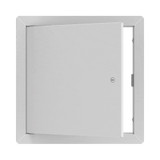Boost Your Workers' Strength by 10X By Investing in Exoskeletons
The construction industry faces constant challenges due to physical demands on workers. Fatigue, injuries, and physical strain threaten project timelines and worker well-being. This is where exoskeleton technology comes in, transforming construction by enhancing worker strength and endurance.
In this article, we’ll explain how exoskeletons benefit construction, focusing on worker safety, productivity, and technological advancements. By understanding these benefits, construction companies can make informed decisions that lead to a safer future for their workforce.
Boosting Worker Productivity
Exoskeletons in construction function like wearable support suits. They improve worker productivity and efficiency by reducing physical strain. This is achieved by transferring the weight and strain of heavy objects to the exoskeleton's frame. Exoskeletons can be used for various tasks such as steel erection, concrete pouring, and prefabricated panel installation, facilitating quicker project completion.
Furthermore, exoskeletons enable workers to handle heavier materials. This reduces the need for lifting crews, accelerating project progress. They also combat fatigue by minimizing muscle exertion, allowing workers to operate longer without tiring.
Enhancing Worker Safety with Exoskeletons
Construction workers face many safety hazards due to physical strain, improper posture, repetitive motions, and heavy lifting. Exoskeletons can help combat these hazards.
- Improving posture: These wearable suits promote proper body alignment during lifting, bending, and overhead tasks, reducing stress on the lower back, shoulders, and knees.
- Reducing strain and injuries: Exoskeletons absorb repetitive strain, lowering the risk of injuries like carpal tunnel syndrome and tendonitis. They further reduce the risk of falls and injuries from heavy lifting by minimizing worker imbalance or muscle fatigue.
Proper ventilation is also crucial for worker safety and air quality on construction sites. Easy-to-access duct systems, facilitated by self-stick hinged duct doors like the ADC-HDSS-6020 self stick hinged duct door - Acudor, enable efficient airflow monitoring and maintenance, promoting a healthier work environment.
The Latest Advancements in Exoskeleton Technology
Recent advancements in exoskeleton technology for construction include:
- Lighter designs
- Improved battery life
- Enhanced AI integration
Exoskeletons are divided into passive and active categories. Passive exoskeletons provide postural support, functioning similarly to external braces. This helps workers maintain proper form during tasks, reducing strain on the body. On the other hand, active exoskeletons offer powered assistance for lifting, carrying, and manipulating heavy objects.
Modern exoskeleton technology focuses on worker comfort and mobility. They are designed to be lightweight, allowing for a wider range of movement compared to bulkier, earlier models. This improves worker comfort and mobility on construction sites, increasing job satisfaction.
The future of exoskeletons is bright with the integration of smart technology. Sensors and artificial intelligence allow for customization of the level of assistance provided based on the wearer.
Effective Implementation in Construction Operations
While exoskeletons in construction offer great promise, their successful implementation requires meticulous planning. Comprehensive training is essential, encompassing safety donning procedures, ergonomic principles for use, and protocols for handling emergencies.
To ensure successful implementation:
- Start with targeted pilot programs focusing on specific tasks with high physical demands.
- Gather data on the impact of exoskeletons during the pilot program, such as task completion times, worker fatigue levels, and injury rates.
- Gradually integrate exoskeletons into broader construction operations, allowing for ongoing evaluation, refinement, and worker training.
Construction companies can leverage exoskeletons to build a safer, more productive, and future-proof workforce. To achieve this, they should follow these steps and address any possible challenges that may arise.
Conclusion
Investing in exoskeleton technology isn't just about acquiring equipment; it's an investment in your workforce. It enhances worker safety, well-being, and productivity in many ways. Ultimately, this fosters a stronger, more efficient, and future-proof construction company that prioritizes both innovation and its employees.
Build a better tomorrow for your workers. Visit Access Doors Canada and check out our wide selection of access solutions, such as HVAC and flush access doors. Connect with us or request a quote. We’re happy to help you reach your goals.









